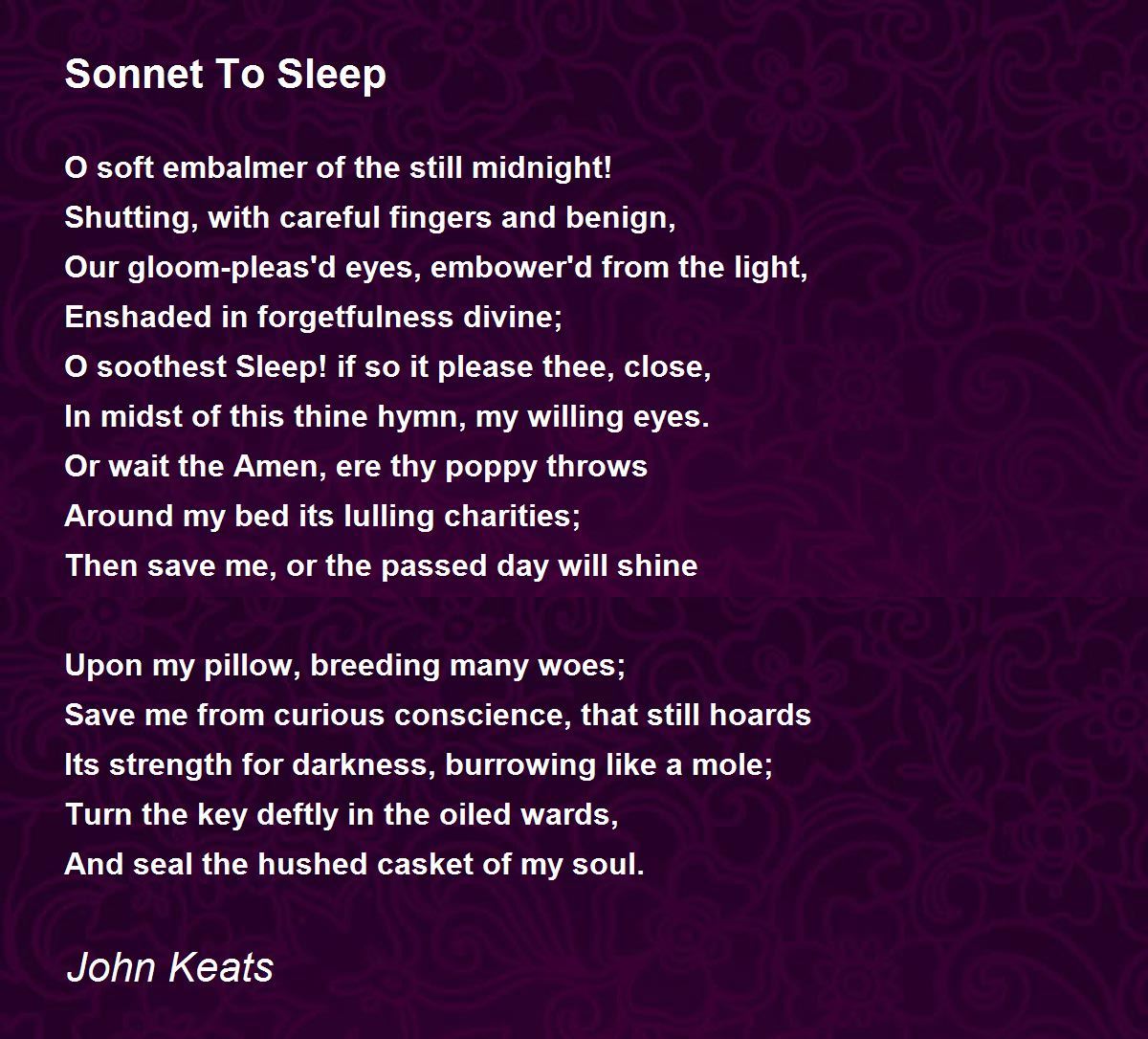
Sonnets About Sleep: A Poetic Exploration
Sonnets About Sleep, a timeless and evocative theme that has captivated poets throughout history, invites us to delve into the ethereal realm of slumber. This poetic form provides a structured canvas upon which to explore the complexities of sleep, from its enigmatic embrace to its elusive nature. Join us on a lyrical journey as we explore sonnets dedicated to this nocturnal muse.
Poetic Styles for Sonnets About Sleep
Various poetic styles can aptly capture the essence of sleep. Here are a few examples:
- Lyricism: Lyrical sonnets express the poet’s personal emotions and experiences with sleep, using evocative imagery and musical language.
- Narrative: Narrative sonnets present a story or vignette related to sleep, creating a sense of suspense and intrigue.
- Meditative: Meditative sonnets explore the philosophical and spiritual implications of sleep, inviting readers to reflect on the meaning and purpose of slumber.
Poems of Sonnets About Sleep
Sonnet 1
In slumber’s gentle arms, I find release,
Where dreams take flight with whimsical ease.
The restless mind, now hushed by sleep’s embrace,
Finds solace in oblivion’s sacred space.
Sonnet 2
Oh, elusive sleep, why do you evade,
My weary limbs, longing to be laid,
In your embrace, where worries fade away,
And night transforms into a transient day?
Sonnet 3
The night descends, a cloak of velvety hue,
Inviting slumber’s sweet, elusive dew.
In dreams, I journey through uncharted lands,
Where reality and fantasy hold trembling hands.
How to Write a Sonnet About Sleep
- Choose a specific aspect of sleep to focus on: Explore themes such as insomnia, vivid dreams, or the restorative power of slumber.
- Use vivid imagery and sensory details: Engage the reader’s senses by describing the physical and emotional experiences of sleep.
- Maintain the sonnet form: Adhere to the traditional structure of 14 lines, with a specific rhyme scheme and meter.
- Consider the perspective: Write from the first-person perspective to convey personal experiences or from the perspective of a detached observer to explore the universal aspects of sleep.
Tips for Reading Sonnets About Sleep
- Read slowly and attentively: Allow yourself to absorb the rhythm, rhyme, and imagery of the poem.
- Analyze the structure: Identify the sonnet’s form, rhyme scheme, and meter to appreciate its technical aspects.
- Explore the themes: Consider the poet’s underlying message about sleep, dreams, and the human condition.
Questions and Answers
- What is the purpose of a sonnet about sleep? To explore the multifaceted nature of sleep, express personal experiences, or contemplate its philosophical and spiritual implications.
- How is sleep depicted in sonnets? As a sanctuary, a mystery, a source of inspiration, or a symbol of life’s transience.
- Why are sonnets considered a suitable form for this theme? The structured nature of the sonnet provides a framework to explore the complexities of sleep within a concise and evocative form.
Conclusion
Sonnets About Sleep offer a rich and diverse body of poetry that invites us to reflect on the enigmatic nature of slumber. By exploring the various poetic styles and techniques employed in these sonnets, we gain a deeper understanding of the human experience of sleep and its powerful hold on our imaginations. May these poems inspire you to delve into the ethereal realm of sleep and discover its hidden treasures.
Note on Plagiarism
It is essential to credit the original authors when sharing or using their work. Plagiarism is a serious offense that undermines the integrity of the literary community. Always respect the intellectual property rights of others and give proper attribution to the creators of the poems featured in this article.
